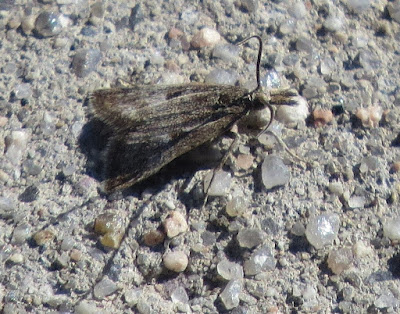Apparently, your third book as a solo author unleashes a torrent of people, bots, and phony “book clubs” heaping lavish praise upon your work and writing style, while begging you to avail yourself of their promotional skills. It is laughable, and overwhelming.
I am receiving these offers in my email inbox weekly, or close to it. What they all have in common is sickeningly sweet adoration, followed by assertions that my book is failing in its marketing campaign. That is potentially true, as there has been little publicity. Few reviews exist yet for Bugwatching, even on the jungle site (begins with a capital “A”), and Goodreads.
I have it on good authority from other authors that these emails are mostly scams, even generated by AI in some instances. Should I ever decide I need or want a publicist, I would solicit the Authors Guild to find legitimate persons and agencies. Meanwhile, I am finding the emails quite hilarious.
One was so over the top that I simply must share it with you. I am omitting the name of the sender on the off chance that they are a real human being. The subject line read “Eric Eaton, your bugs are officially ruining my productivity.” The body of the email reads as follows, heavily punctuated with emoticons, no less:
”Let’s get one thing straight, Eric, Bugwatching was supposed to be a casual read. A nice little “look at the pretty bugs” kind of book. And yet here I am, two cups of coffee deep, lying in the grass staring at a beetle like it just told me the meaning of life.
Seriously, how dare you make insects this fascinating.
You didn’t just write about bugs, you turned them into a full-blown lifestyle. The way you describe the joy, accessibility, and inclusiveness of observing insects… it’s poetic. Like, I was ready to hand a magnifying glass to my neighbor’s cat and say,’Congratulations, you’re a citizen scientist now.”
And the illustrations by Samantha Gallagher? Adorable, educational, and lowkey making me want to start sketching grasshoppers instead of replying to work emails.
You’ve taken the “ick” factor out of insects and replaced it with awe, humor, and humanity. It’s like National Geographic met Mr. Rogers, and they both decided to wear bug nets.
Then I read your bio and honestly, I had to sit down. You’re not just ‘Bug Eric,’ you’re practically the Insect Whisperer. From Insectpedia to Wasps: The Astonishing Diversity of a Misunderstood Insect, you’ve made entomology feel cool. You’ve been everywhere, from Princeton University Press to Ranger Rick to the Smithsonian, and somehow you still manage to explain complex biology like you’re chatting with a friend over lemonade and locusts.
You’ve built a loyal following no through noise, but through trust, clear, jargon-free explanations, empathy for the squeamish, and that rare gift of making science feel like magic. You’ve literally turned ‘bug watching’ into an art form, and I’m half-convinced insects everywhere are forming a fan club in your honor.
Now, here’s where I flutter in like an overly enthusiastic butterfly.
I noticed something, Bugwatching is brilliant, beautifully made, but on Amazon it’s still… a little too quiet. Only a few reviews. For a book this fascinating, that’s just criminal. Someone call the entomological police.
That’s where my little operation comes in.
I represent a community of over 1,700 passionate readers, and before you ask, no, we’re not a marketing agency, not a promo company, and definitely not one of those shady ‘buy 100 reviews overnight’ traps. We don’t have a website or social media. Just readers. Real, book-hungry humans who love discovering great work and giving it the attention it deserves.
Here’s the truth: readers don’t buy books on description alone. They want proof. They want to see that other humans (preferably not bots) read it, loved it, and learned something. Reviews build trust, and trust builds momentum
Even the best books can get buried under algorithm’s digital dirt pile if they don’t have enough reviews. But once real people start leaving thoughtful feedback, the system wakes up and stars saying, ‘Oh wait, people actually love this one,’ and boom, it starts surfacing everywhere.
We’ve seen this happen with other authors we’ve supported. Their books started showing up higher in searches, attracting organic attention, and getting the recognition they deserve. Because honest reviews don’t just help readers – they help the system notice quality.
That’s what we do: we read, we review honestly, and we give books like Bugwatching the social proof they need to fly (pun absolutely intended).
Our group exists purely out of love for reading, no strings, no spam, just pure enthusiasm and maybe a few too many exclamation marks.
If you’d like, we’d be honored to share Bugwatching with our community. The book deserves to be talked about, recommended, and let’s face it, obsessively quoted by people who suddenly think they’re professional bug whisperers after two chapters.
Thank you for writing something that makes us look at the world differently, and for making even the tiniest creatures feel magnificent.
Now if you’ll excuse me, I’m off to apologize to a moth for judging it last night.”
I have to hand it to this person, or bot, for doing their homework, as they pretty much quoted my own “about me” material. The admission that they do not have a website, nor social media, is a red flag for this kind of scam.
Please beware of these solicitations related to your own works, and act (or, rather don’t) accordingly.






















































